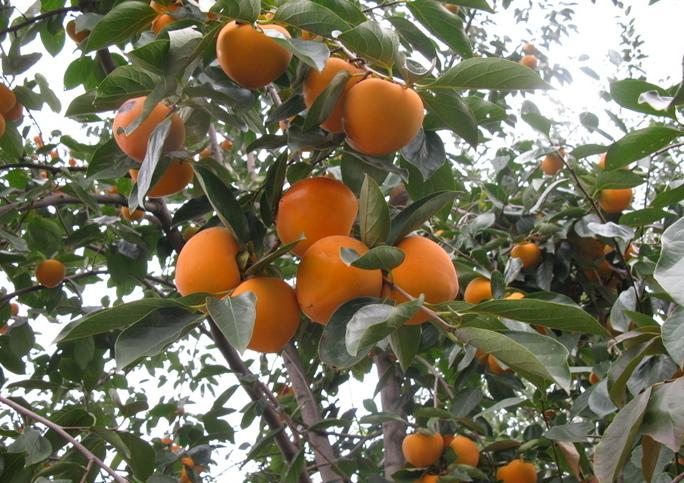Japanese Persimmon seeds Diospyros kaki seeds
Japanese Persimmon, Diospyros kaki, Fruit tree Seeds
Fragrant Flowers, Edible Showy Fruits, Fall Color, Attracts Birds and Other Animals, Drought Tolerant
Japanese persimmon is a deciduous fruiting tree with a rounded spreading crown that grows 20-30 feet tall. This tree is noted not only for its edible fruits but also for its excellent ornamental features. Oval to obovate leaves to 6 inches long emerge yellowish green in spring, mature to glossy green in summer and turning an attractive gold to red in fall. Trees are usually dioecious (separate male and female trees), but some trees have both male and female flowers. Notwithstanding the Flower types, trees are parthenocarpic (may set seedless fruit without pollination). Fragrant, non showy flowers bloom in late spring, with the creamy white female flowers appearing solitary and the pink toned male flowers appearing in clusters of three. Edible persimmon fruits to 4 inches in diameter mature in late fall, and may persist on the tree into winter. The tree is a sight to behold when leaves have fallen in autumn, displaying the bright yellow orange fruits throughout the canopy. Japanese persimmon is native to Japan and mainland Asia where they have been cultivated for centuries.
Fruits may be harvested when the skins reach deep orange. Fruits can be eaten fresh or dried (hoshigaki) and are commonly used in syrups, jellies, ice creams, cakes or pies. Persimmon leaves can be used to make teas.
Other Names: Japanese Persimmon, Kaki Persimmon, Oriental Persimmon
Growth rate: Slow to Medium
Plant Type: Deciduous fruiting tree
Family: Ebenaceae
Native Range: china, Japan
Height: 20 to 30 feet
Spread: 20 to 30 feet
Shape: Round; upright
Bloom Time: May – June
Bloom Color: Creamy white (female) Pink (male)
Sun: Full sun
Fall Color: Orange, red, yellow
Drought tolerance: Moderate
Water: Medium
Maintenance: Low
Culture: Promptly remove root suckers unless naturalized effect is desired. Once established, they need minimal care and require little or no pruning. Fertilize three times a year as you would for other fruiting trees.
Uses: May be pruned as a hedge, screen. Oriental persimmons make attractive shade trees with the added bonus of delicious fruit. They can be espaliered or used as specimen trees in mixed plantings, where their colorful fall foliage and fruits will be emphasized against an evergreen backdrop.

